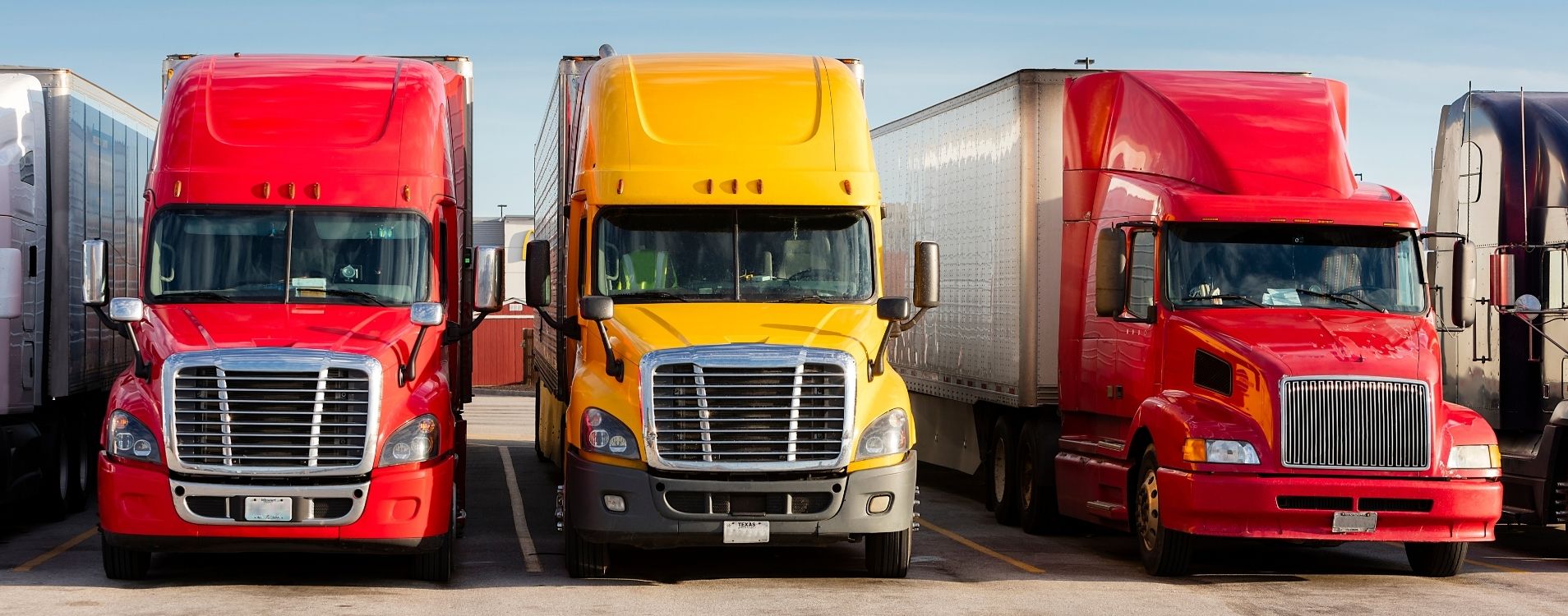What Is A Load Board, And How Does It Help Your Trucking Business?
You can’t be a carrier without something to carry. In the trucking industry, we call that something freight. So before you even think about starting a trucking company, you need to know where to find freight, the loads you get paid to move.
Luckily, you’re not the only one looking for connections. Shippers are looking for carriers, and so are brokers, those third-party matchmakers who help shippers find you. One way shippers and brokers find carriers is by posting their freight on load boards.
So what is a load board? And how do load boards work? Here’s what you need to know, in one easy-to-use FAQ.
1. What is a load board in the trucking industry?
A load board is an online marketplace that matches shippers, brokers, and carriers to keep freight moving. When you log in with a trucker’s account, you’ll find a searchable list of available loads, which you can then offer to carry. If the shipper likes your offer, you’ve got a job (or at least a gig).
A load board combines a repository of freight that needs to move with the visibility you need to claim a job. Most load boards also provide lots of information about these loads, including:
- Load origin and destination (i.e., where the freight is now, and where it needs to be soon)
- The shipper’s (or broker’s) contact information
- Shipping deadlines
- Equipment requirements (i.e., refrigerated trailer, flatbed, dry van, etc.)
- The payment rate
Think of a load board as a kind of gig-work website for truckers. Log on, find a load, make a bid, and you’re in business.
2. How do load boards work?
In a sense, a load board is kind of like any shared online space. Users sign up for an account. Brokers and shippers upload load details. The site organizes those loads into a searchable database, which owner-operators and fleet owners can filter to find the work that fits into their operation. Use filters to find refrigerated freight, hot shot loads, or haz-mat jobs, for instance.
When you spot a load you’d like to carry, you can claim it with a click. If you have questions about the load—or want to see if the rate is flexible—you can reach out to the sponsoring shipper or broker through the board, or through board-provided contact information.
Some load boards are part of broader trucking service suites, and may provide even more features, including digital payments and factoring—a third-party financial service that makes sure you get paid quickly.
Looking for factoring without restrictive contracts? Try Bobtail today!
3. How much do load boards cost to use?
Good news: Lots of load boards are free for carriers, even if they may charge shippers and brokers to post loads. Many load boards only charge for advanced features, allowing anyone to register and find some loads for free.
Of course, there are also load boards that require a paid monthly subscription to use. For example, the DAT load board starts at $39.95 per month, and goes up from there, with premium plans topping out at $280 per month for all the bells and whistles.
4. Where do I find these load boards?
To find a load board, look no further than your nearest internet search engine. Better yet, click one of the links below. Here a few popular load boards run by brokerages, major logistics firms, and carrier service providers:
- DAT. As we mentioned, this is a premium paid service, which goes beyond the standard load board to offer route optimization tools, broker credit data, and more business insights.
- Truckstop.com. Paid load board with lots of features and a mobile app. Basic access for carriers costs $39/month, with Advanced plans at $125/month, and Pro plans for $149/month.
- Landstar. Free load board with optional paid services.
- J.B. Hunt. Free load board with optional paid services.
- Schneider. Free load board with optional paid services.
- CH Robinson. Free load board with optional paid services.
- BigRoad Freight. This is a different sort of load board, one that’s built directly into your BigRoad electronic logging device (ELD). You’ll pay a monthly ELD subscription fee, but the load board and carrier management platform is included in the cost.
This list just provides examples; dozens of other load boards are just an internet search away.
5. What are some tips for getting the most value out of load boards?
If you’re new to load boards, it’s easy to make mistakes. Here are a few things every trucker should know before wading into the waters of a load board:
Don’t wait to put in a bid.
Freight moves fast on load boards. If you see a load you’d like to claim, be prompt about it; in an hour, it might not be there.
Take advantage of multi-stop features.
Some load boards allow you to search for freight in more than two stop locations. That can help you string jobs together into a full week of work.
Be prepared to expand your search perimeters.
If you don’t find freight with the perfect conditions, you might have to loosen up your preferences. Deadhead miles are a prime example: If you can’t find good freight within 25 deadhead miles, you’ll find it with 50 or 100.
Get comfortable with negotiation.
It’s okay to be firm on your pricing. If you see a rate that’s not quite what you need to remain profitable, contact the broker and propose a different figure. The worst you can get is a “no,” and brokers are often willing to adjust rates to move freight quickly.
Build relationships with brokers you meet on the load board.
Load boards are great places to start direct relationships with shippers and brokers. After a few successful partnerships, reach out to these customers outside the load board. They may be happy to provide work outside the open market.
6. How do load boards make your job easier?
Load boards are an essential tool for finding work. They make it quick and easy to book that next job. But many load boards also provide additional services and features that can help your trucking company grow.
Few load boards today operate independently of other carrier services. One of the leading trends is adding a load-matching tool to an ELD, as in BigRoad Freight. This seems like a logical next step for the industry; after all, an ELD tracks your truck, so it can easily show spot freight jobs in the surrounding area.
In another trend, companies that run load boards often offer financial services, such as freight factoring. Factoring is a solution to the cash-flow problems built into the trucking industry, where shippers and brokers may not pay for 30, 45, or even 60 days upon a job’s completion.
A factoring company pays your invoices today, then collects the value from your customer, saving you the hassle of dealing with collections. You’ll pay a low percentage of the invoice value (usually around 3%, plus or minus) for the convenience. But beware: Traditional factoring companies, some of whom operate load boards, may lock you into restrictive contracts that limit you to taking payments through them.
Bobtail is different. An independent factoring service built by truckers, for truckers, Bobtail is a contract-free factoring tool. We never charge hidden fees. We don’t assign a volume minimum. You choose which invoices you want to factor, and which you don’t. That freedom and simplicity are rare in this business.
Bobtail gets you the cash you’ve already earned when you need it, regardless of contractual payment terms. Sign up here to learn more.




